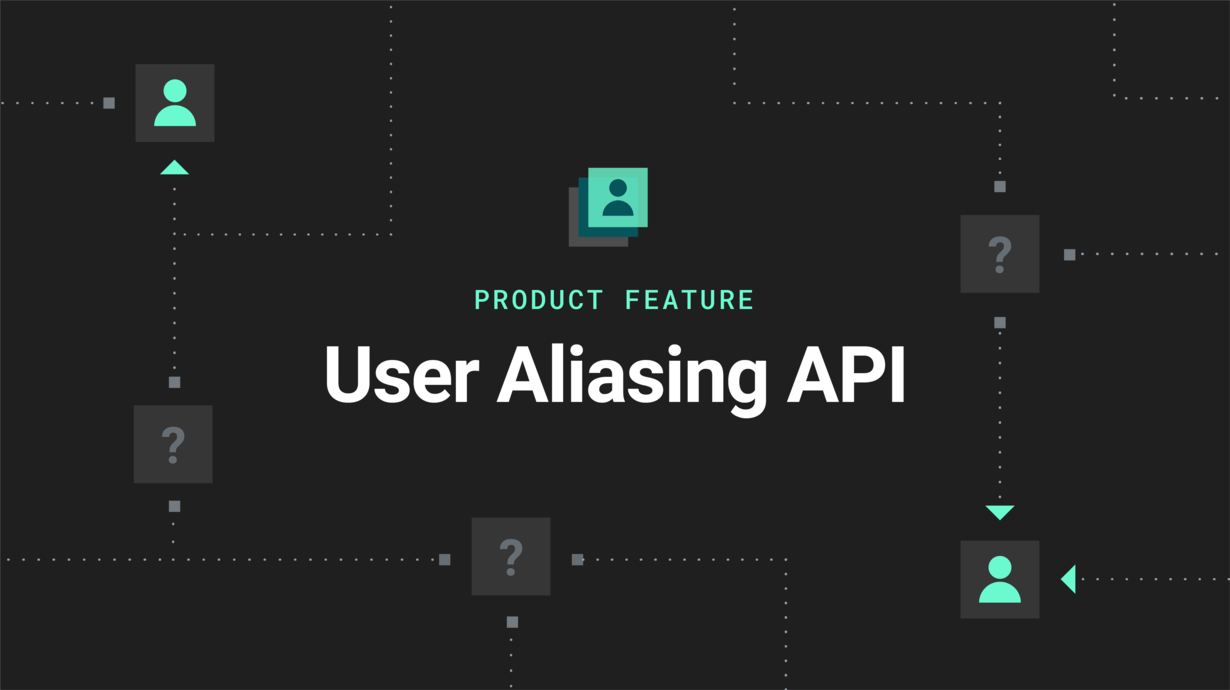User Aliasing API: Clarify customer journeys
mParticle’s User Aliasing API allows brands to programmatically merge anonymous user events with their logged-in events, providing brands with a complete, accurate view of their customers’ profile and event journeys as they move from being anonymous to authenticated across every touchpoint.

Access to accurate, unified customer data from every touchpoint is critical to delivering intelligent customer experiences, but most brands’ understanding of their customers’ journeys is hardly complete. Before customers register or transact on a site or app, or if they’re simply logged out, they’re treated as an "anonymous" user. If that same user either subsequently registers or logs in, whether on the same device or not, an important decision must be made on how to treat that data. Without the ability to merge and sync the data from a single customer’s "anonymous" and "known" engagement sessions, brands could miss the opportunity to engage with customers in meaningful ways that can lead to conversion and long-term loyalty. To address this, mParticle has launched an all-new User Aliasing API within IDSync.
mParticle’s User Aliasing API allows brands to programmatically merge anonymous user events with their logged-in events, providing brands with a simple way to create and maintain a complete, accurate view of their customers’ profile and event journeys as they move from being anonymous to authenticated across every touchpoint.
Known, unknown, and the problem with fragmented journeys
Brands typically categorize anonymous users as a homogenous group and are unable to correlate relevant experiences for them as they transition from remaining anonymous to being authenticated.
Let’s look at some example scenarios:
1. For capturing anonymous user data most brands rely on third-party vendors, such as analytics or marketing cloud solutions, where their identity resolution rules are either prescriptive or include inferred assumptions that are difficult to track. Usually, these vendors attribute anonymous behavior to the last logged-in user, by way of a device ID association. This assumes that the logged-in user generated those events because they were the last known user on that device. Depending on the brand's identity rules, this could be an incorrect assumption.
2. An existing user can log in across multiple devices as they interact with the brand’s digital properties. When a user logs into their account, their existing profile is retrieved and only events going forward are mapped to their vendor specific ID. The problem lies when events received while the user was anonymous are effectively “lost” in that they cannot be attributed to the true vendor ID and are therefore not associated with the customer's actual user ID.
Unify and centralize your customers' engagement data
mParticle’s identity aliasing allows brands to merge anonymous user events with their logged-in events, giving marketing and product teams a complete picture of a user’s interaction with the brand’s touchpoints.
Identity aliasing works in three easy steps:
1. User Aliasing API, as a part of IDSync, can be called by clients to alias an “anonymous user” with a “known user” profile that has at least one login-ID. This allows to connect a user’s anonymous pre-login events with their post-login activity on the website or in a mobile application.
2. The mParticle platform will automatically merge any activity captured on the “anonymous user” with the “known user” profile.
3. The mParticle platform maintains a persistent profile for the “known user” and as aliasing requests are successfully fulfilled via the API, the platform maintains a record of all the “anonymous user” profiles.
What identity aliasing can do for you
Better insight into, and more robust understanding of, the complete customer journey from first interaction through repeat behaviors and purchases.
Aliasing gives you control over the transition between the “anonymous” and “known user” profiles. mParticle’s user activity view (UAV) provides full visibility into the events timeline for the known user profile and includes anonymous events that have been aliased.
Improve marketing ROI derived from more complete customer profiles
Aliasing also allows an app to capture an audience of users who clicked on an in-app promotion for a vacation package, and then went on to purchase the recommended package. If the app uses the User Aliasing API to link “anonymous” and “known user” profiles, then the user will match the audience definition. Otherwise, neither the “anonymous” profile nor the new “known user” profile will fulfill the requirements of the audience definition and the user will be excluded from the audience.
Better personalization across logged-in and logged-out states; and across devices, channels, and partners.
Once identity aliasing is in place, mParticle’s Profile API can be used to personalize on-site and in-app experiences wherever your consumers are in real time.
Try it today
The new User Aliasing API is now available as part of mParticle’s IDSync for current customers. Additional information on these features can be found in our how-to documentation here, if you’d like to learn how to get started.
If you aren’t an mParticle customer yet, get in touch to learn more about how identity aliasing can help your brand get a better understanding of your customers and help you create more relevant experiences when they matter most.



